Is your water hard? No, we’re not talking about how it feels in your hand. When water is referred to as “hard,” it means that the water contains more minerals than it should. In particular, hard water has an excessive amount of calcium and magnesium. Now, why is this important?
Well, the presence of these minerals in your water will affect how it functions. For example, soap does not dissolve well in hard water which means that it becomes ineffective in cleaning. Also, this causes a film of soap to cling to your skin. And it’s not just your skin. This affects your clothes as well as any other object you clean with some form of soap such as your dishes and your car. The insoluble soap deposits show up as spots or scales, not something you want to see in your car.
There are a lot more issues that turn up when you use hard water in the home. Fortunately, the fix is easy enough – a water softener. Unfortunately, choosing the right water softener isn’t as easy. But don’t worry because we’ve got you covered. Below is a list of the best water softeners on the market.
Top 7 Water Softeners Of 2020 Reviewed
1. Eddy Water Descaler Electronic Water Softener
 Electronic Water Softener
Electronic Water Softener
The Eddy Water Electronic Descaling Device is, as you’ve probably already guessed, not a conventional water softener. It does not use salt to remove hard minerals. Instead, it makes use of electromagnetic waves to alter the adhesion properties of hardness minerals to prevent them from depositing on the surfaces of your pipes and appliances. For anyone who knows nothing about plumbing, this is a good option because you only need to fit the coils around the water pipes.
Aside from easy installation, you’ll be glad to note that the manufacturer backs up its product with a risk-free, no-quibble 12-month money-back guarantee and a lifetime repair or replace guarantee. They even let you know that you can return the product after 30 days without penalty as long as you contact them directly.
However, the device does not seem to be as effective when wrapped around iron or lead pipes. Also, since it doesn’t really soften water. What it does is it slows down the build-up of minerals and makes it easier to remove.
Pros:
- Salt-free option
- Money-back guarantee and lifetime warranty
- Easy installation
Cons:
- Does not truly soften water
- Scale still builds up
- Not for outside installation
2. Fleck 5600SXT 48,000 Grain Water Softener
 Water Softener For The Money
Water Softener For The Money
Fleck is one of the most trusted brands in the industry so it’s no surprise that one of its products is our number 1 pick. The Fleck 5600SXT 48,000 Grain Water Softener features a polyglass tank that measures 10 x 54 inches while the brine tank is 15 x 34 inches and features a safety float system. The Fleck 5600SXT control head provides you with touchpad controls and an easy-to-read display.
This water softener comes with a USB drive that contains instruction files (spec sheets, service manuals) and videos to make installing and using this appliance easily. The system makes use of demand regeneration to save salt and reduce wastewater. You also get a PurTest Iron Hardness Plus test kit plus a bypass valve with a 1-inch yoke connection. The manufacturer’s warranty is 5 years for the control head and 10 years for the tank.
We love the fact that installation is pretty easy as long as the tank is already fully charged with resin. However, it does not come with a low salt light so you’ll need to check it regularly to see if it needs refilling. And if you wish to install it outside, you’ll need to create your own cover to ensure that the electrical connection remains dry.
Pros:
- Easy to install
- Perfect for a large household
- Comes with a USB drive and test kit
Cons:
- No cover for outside installation
- Filling the tank with resin is difficult
- No low salt light
3. On The Go Portable Water Softener
 Water Softener And Conditioner
Water Softener And Conditioner
The On The Go Portable is a water softener that is rated at 16,000-grain capacity. The unit is designed for RV use but you can use this in a small apartment as this is the largest portable model in the market. The unit comes with a carry handle on top as well as a large opening for the easy addition of salt. You don’t need to hook this up to an outlet or even use any tools when installing this water softener. The hose connector can swivel 360 degrees which makes things even more convenient.
We love the fact that regeneration is every 30 days and that you can use regular table salt (just 1 to 2 containers). Plus, regeneration only takes 30 minutes. The device comes with water test strips so you can easily check if the water softener is working (it does!). However, this isn’t ideal for a large household. Also, the fittings are plastic so it may leak at any time.
Pros:
- Lightweight and compact
- Uses regular table salt
- Easy to install
Cons:
- Not for large households (small families only)
- Plastic fittings feel flimsy
4. Watts RV PRO-1000 Portable Water Softener
 Portable Water Softener
Portable Water Softener
This is a portable water softener that is ideal for an RV. The Watts RV PRO-1000 is rated at 10,000 grains of hardness. It comes with test strips so you can check the water hardness level. For a portable water softener, this does a really good job of lowering hardness levels. It’s very easy to install and use.
However, if the rating is 425ppm, then you’ll either have to let it run for longer or get something bigger. Also, the connections are a bit flimsy (made out of plastic) and some users have reported leaks.
Pros:
- Does the job
- Lasts a month before requiring regeneration
- Easy to install
Cons:
- Have to do regeneration manually
- Cannot handle very hard water (425ppm)
- Plastic connections
5. Aquasana Whole House Water Filter
 Water Softener And Filter
Water Softener And Filter
Before you balk at the price (just a little under $1000), you should know that the Aquasana EQ-1000-AST is not just a whole house water softener. It also functions as a water filter and comes with a pro-grade installation kit. The main purpose of this device is to remove chlorine, heavy metals, pesticides, and other contaminants from drinking water. The lifespan of this appliance is 1,000,000 gallons of use or 10 years.
Now, like a water softener, it doesn’t make use of salt at all. Instead, it makes use of SCM technology. SCM short for Scale Control Media uses water flow to alter the structure of the hardness minerals to prevent them from depositing on surfaces. Instead, the minerals attach themselves to polymer beads. For a water conditioning unit, this is pretty effective in preventing scale buildup.
However, you still feel the hard water when it comes out. Also, installation isn’t easy if you don’t have basic plumbing skills. And if you do not get the PRO install kit, the plastic fittings can break when overtightened or cause a leak.
Pros:
- Water filter capabilities
- Salt-free option
Cons:
- Expensive
- Difficult to install
- Does not really soften water
6. Aquios FS-220 Salt-Free Water Softener and Filtration System
 Salt Free Water Softener
Salt Free Water Softener
The AQUIOS Water Treatment System is another salt-free water softener though it makes use of a different technology compared to electronic/magnetic water softeners. This appliance makes use of Siliphos, a polyphosphate additive that prevents scale deposits and reduces the amount of buildup in your pipes and appliances over time. While this does not really remove the hardness minerals from your water, it does have a different feel compared to hard water that has been left untreated.
Aside from working as a water softener, this device also functions as a water filter. It makes use of a carbon block filtration that is rated at 5 microns to remove sediment, chlorine, and other contaminants from the water. Water pressure isn’t affected by installing the system. And there’s no need to use electricity, program the device, or provide maintenance.
However, you need to keep in mind that it doesn’t really remove the hardness minerals from your water. It doesn’t really remove scaling but it makes it easier to clean up. Also, filters do require changing every 3 to 6 months and they can be expensive.
Pros:
- Limits scaling deposits
- Also a water filter
- Easy to install
Cons:
- Does not soften water; only conditions it
- Expensive filters need to be replaced every 3 to 6 months
- Not for very hard water
7. Iron Pro 2 Combination Water Softener
 Water Softener And Iron Filter
Water Softener And Iron Filter
The Iron Pro 2 is a true water softener with a massive 64,000-grain capacity. It also features a fine mesh resin for filtering iron. The device is rated to remove hardness up to 75 gpg, iron up to 6-8 ppm, and manganese up to 6 ppm. The water softener comes with the Fleck 5600SXT control head. The LCD display is easy to read and the touchpad controls make it easy to use. The resin tank is 12 by 48 inches while the brine tank is 18 by 40 inches. The device uses an on-demand metered system so it will regenerate when needed, reducing the amount of salt and water used. You also get a stainless steel bypass valve with the product.
Just keep in mind that installation isn’t all that easy if you don’t have basic plumbing skills. Also, getting the resin into the tank is not easy. However, it is very good at filtering out iron and softening your water. Just be prepared to shell out a good deal of money.
Pros:
- Massive capacity (can be used for a large household of 5-6 people)
- On-demand metered system
- Iron filter
Cons:
- Expensive
- Confusing installation instructions
- Difficult installation if no previous experience
Choosing The Best Water Softener – The Ultimate Buying Guide
Obviously, you don’t want to have hard water running through your pipes. It’s going to clog up your plumbing system and lessen the efficiency of some of your appliances such as the water heater. Not only that, you get scale buildup present in anything you wash – your car, the bathroom, and even your skin! And if you think this won’t happen to you, think again.
Based on the U.S. Geological Survey, 85 percent of homes in America have issues with hard water. Now that we’ve all agreed that this is a problem, what should we do? Well, there’s an easy fix. It’s a water softener, of course! The real problem is in choosing one. Our guide should help you navigate through the technical process of what a water softener does and learn what features make a good one.
How does A Water Softener Work?
Minerals like calcium and magnesium are positive ions. In order to get rid of these positively charged ions, the water softener exchanges them for something else. Most water softeners use sodium (also positively charged) to replace the “hardness” minerals. So, how does the exchange occur? Well, the water softener makes use of a medium which is usually resin beads or zeolite.
These are inorganic materials that have a negative charge which means that it will attract positively charged ions. Because sodium has a weaker charge (Na+) compared to calcium (Ca+2), magnesium (Mg+2), and iron (Fe+3), it will be easily pushed aside by the “hardness” minerals once the hard water enters the softener tank. Once this happens, the water plus that little bit of sodium gets dispersed back into the home’s plumbing system, leaving the minerals trapped inside.
So, what happens to the minerals trapped in the tank? Well, regeneration takes place. Now, water softeners have a sort of secondary tank called the brine tank. This is because it is where you will combine water and salt to create a solution called brine. During the regeneration phase, the brine solution is taken into the softener tank where the minerals are trapped. Because there are more sodium ions than hardness minerals present, the sodium ions displace these minerals from the medium. To put it more simply, the ion exchange happens again but in reverse. When the hardness minerals are released, the water with the minerals gets flushed out through the wastewater drain. Once regeneration is done, the water softener is once again ready to start all over again.
Take note that the amount of sodium used for this ion exchange is not enough to convert your soft water into saltwater. However, there are some who are serious about their salt intake. If you’re one of those, you can consider another type of water softener.
Is there Another Type of Water Softener?
Conventional water softeners are not the only option in the market. Some of them fall in the salt-free category. In fact, technically, these are not softeners in the strictest sense. They are water conditioners or descalers, as they are more commonly known. These appliances do not actually remove hard minerals from your water. Instead, it stops them from being deposited as scale on whatever surfaces the water sits on such as appliances that use water, dishes, bathroom floors, and cars.
So, how do these descalers work anyway? To put it simply, the technology changes the chemical properties of the hardness minerals so they don’t stick to surfaces and start to build up. What are examples of descalers? These are called magnetic or electric water softeners.
What is Grain’s Capacity?
When a manufacturer mentions grain capacity, it talks about the number o grains of water hardness that can be removed by the appliance before it needs to undergo regeneration.
How can You Measure how Hard My Water is?
If you use city water, you can contact your municipality to ask your water hardness. If you’d rather do it on your own, you can get a water test kit. The unit of measurement for water hardness is grains per gallon (gpg). Some municipalities measure water hardness in milligrams, liters, or parts per million (ppm). If so, you should know that 1 gpg is equal to 17.1mg/L or 17.1 ppm.
What Specification Should My Water Softener have?
To determine what grain capacity you should look for, you need to calculate how much water is used each day in your house and how many grains of hardness in your water needs to be removed every day. The average person uses 80 gallons per day so multiply that figure by the number of people in your house then multiply that number by your water hardness. On average, a four-person household will use a water softener with a grain capacity of 33,000.
How Long Should Regeneration be?
The regeneration process, as we’ve already explained earlier, is how the appliance prepares the resin for the next softening process. When regeneration is happening, it will disconnect itself from the water system. What this means is that softened water won’t be available during the time that the water softener is in this phase.
Typically, this process shouldn’t take more than 2 hours. On average, it takes about 85 to 90 minutes so anything less than 2 hours is good. Longer regeneration times could lead to a bevy of complaints from your household members.
Are there different types of Regeneration?
Now, there are two types of regeneration used by water softeners. One is time-initiated regeneration. The control valve has a set schedule on when it will regenerate. The default setting is typically 2 am and usually occurs once a week (minimum). The schedule will depend on a number of factors such as the water hardness, the size of your softening tank, the amount of water you use, the number of people using the water, etc.
More modern water softeners make use of demand regeneration. What happens is that the valve monitors your water usage and then initiates regeneration after a certain amount of hard water has been softened. This means that the more water you use, the more times your water softener will initiate regeneration. Of the two, this is the more efficient type as well as less wasteful since it causes the appliance to only regenerate whenever it is necessary. Time-initiated regeneration, on the other hand, occurs whether or not your water softener requires regeneration.
What if I don’t want to be Without Soft Water at any Point during the Day?
If you don’t want any downtime when it comes to your access to soft water, then you need a dual-tank water softener. This type of water softener has two resin tanks that take turns in regenerating. What this means is that while one tank is out of commission, the control switches on the other tank to supply you with soft water so you never get any service interruption.
What kind of Salt should I Use?
Well, first off, there are different kinds of salt available. There are three different forms of salt – pellets, crystal, and block salt. Of all three forms, pellets are the most common and less expensive. Now to the different types.
Evaporated salt pellets: Are the purest (99.9%). What this means is that there is less likelihood of any water-insoluble matter in the pellet that would pose a problem later on due to buildup.
Solar salt: Can be found in crystal and pellet forms. This type of salt is formed by evaporated seawater. Compared to evaporated salt, this only has a 99.6 purity rating. This may not be as effective as evaporated salt if the level of water hardness is high.
Rock salt: As you may already know, it looks like little rocks. These are the cheapest you’ll find but don’t let that convince you to choose this. Rock salt is less soluble compared to the other two because it contains a lot of calcium sulfate. The buildup from the insoluble matter will mean maintenance problems in the future such as more frequent cleaning).
Block salt: Is generally not recommended unless recommended by the manufacturer. You will need to fully submerge the blocks to ensure that you get the amount of brine solution you need.
I don’t want Sodium in my Water. Is there an Alternative?
If sodium intake is something you need to take seriously, then there’s an alternative. Potassium chloride can be used instead. However, this is harder to find and costs a whole lot more than salt.
Conclusion
Forget about all the science for a moment. A water softener is a must-have if you deal with hard water. Not only will you be able to enjoy drinking your water, but you’ll also not waste a lot of money buying detergents that are not very effective with hard water. We hope that you’ve picked your ideal choice.


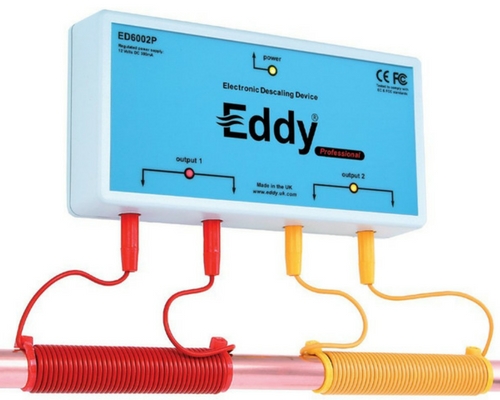
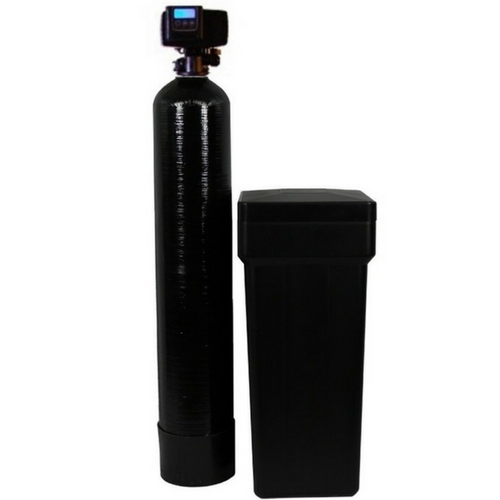
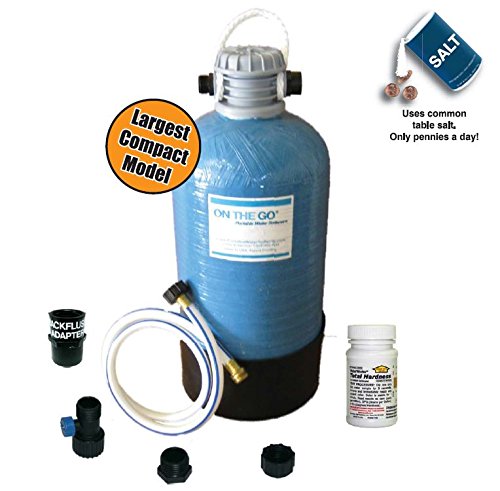
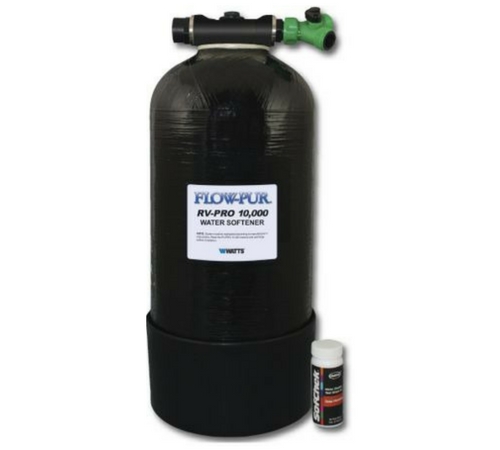
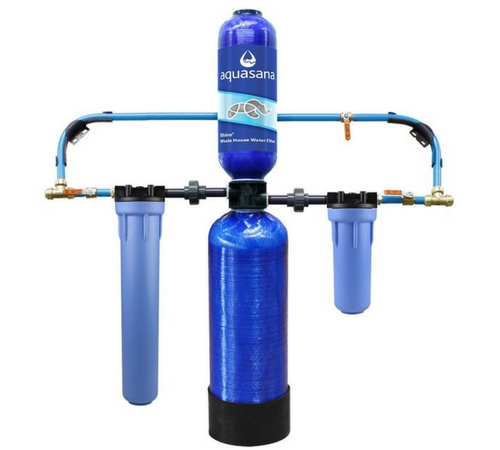
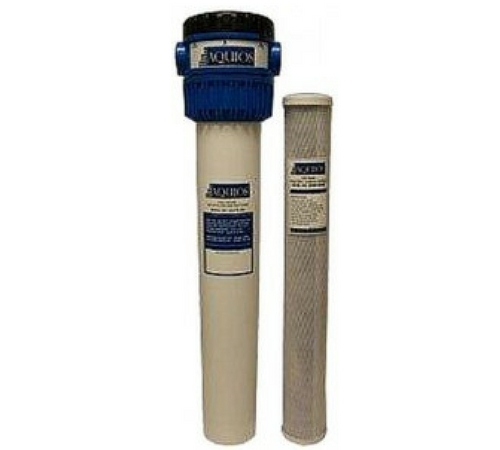
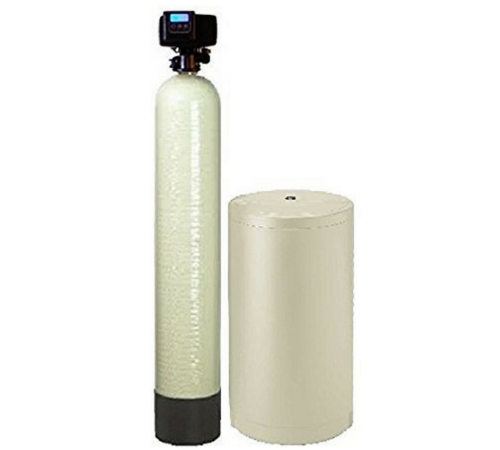
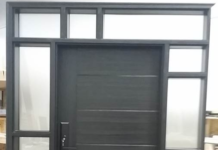

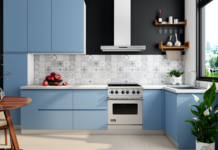
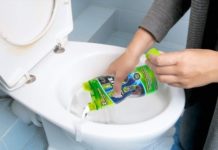

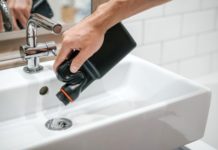





![Best Crochet Hooks for Beginners and Pros [2020 Update] best crochet books](https://www.awebtoknow.com/wp-content/uploads/2018/01/best-crochet-books-100x70.jpg)


